Asymptomatic pulmonary artery embolization port catheter fragment
Broken catheter embolism is a rare but often fatal complication of implantable venous access devices” Tandon et al (2019). Abstract: Broken catheter embolism is a rare but often fatal complication of implantable venous access devices. Prompt removal is key to avoiding an adverse outcome. You may also be interested in… [rp4wp] Reference: Tandon, S., Livingston, […]
Antibiotic prophylaxis in totally implantable port placement

To evaluate risk factors of infection and effectiveness of preprocedural single-dose intravenous prophylactic antibiotic (PABX) during totally implantable venous access port (TIVAP) placement in preventing procedure-related infections” Nezami et al (2019). Abstract: BACKGROUND: To evaluate risk factors of infection and effectiveness of preprocedural single-dose intravenous prophylactic antibiotic (PABX) during totally implantable venous access port (TIVAP) […]
Peripherally inserted central catheter ports placed at bedside by specialist nurses

Most peripheral ports can be placed bedside by specialist nurses in designated clinical areas rather than costly operating rooms or interventional radiology suites” Katsoulas et al (2019). Abstract: Implanted ports are an important vascular access device for patients with malignancies requiring long-term chemotherapy. Peripherally placed ports are increasing in use as they are a safe, […]
Residual lipid emulsion in chambers of flushed totally implantable ports

The aim of the present study was to use a quantitative fluorescence imaging technique to evaluate the invisible amount of residual lipid emulsion in port chambers flushed with various fundamental protocols” Okamura et al (2019). Abstract: The aim of the present study was to use a quantitative fluorescence imaging technique to evaluate the invisible amount […]
Power-injectable totally implantable venous access devices
“To retrospectively evaluate the success rates, peri-interventional, early and late complications and patient satisfaction associated with power-injectable totally implantable venous access devices (TIVAPs)” Kunz-Virk and Krüger (2019).
Investigation of complications following implantable port insertion in cancer patients

This retrospective single-institutional review was performed to identify rates of complications from port placement and potential factors associated with these events” Skelton et al (2019). Abstract: Central venous access devices, specifically implantable ports, play an essential role in the care of oncology patients; however, complications are prevalent. This retrospective single-institutional review was performed to identify […]
Systematic review examines risk of bloodstream infection associated with implantable ports

This systematic review and meta-analysis aimed to provide evidence-based guidance to better understand the risk of central line-associated bloodstream infection (CLABSI) in cancer patients who received totally implantable venous access ports (TIVAPs) compared with those who received external central venous catheters (CVCs)” Jiang et al (2019). Abstract: OBJECTIVE: This systematic review and meta-analysis aimed to […]
Clinical impact of peripherally inserted central catheters vs implanted port catheters

Our aim was to study the incidence of catheter-related deep venous thrombosis in patients with cancer receiving chemotherapy through either a PICC or a PORT” Taxbro et al 92019). Abstract: BACKGROUND: Centrally inserted totally implanted vascular access ports (PORTs) and peripherally inserted central catheters (PICCs) are widely used for the administration of chemotherapy. Our aim […]
Reducing the risk of implantable port catheter fracture
For subcutaneously implanted central venous ports, some complications due to prolonged placement have been reported. We investigated the appropriate puncture points and port placement sites to prevent catheter fracture in right internal jugular port placement” Matsunari et al (2019). Abstract: BACKGROUND: For subcutaneously implanted central venous ports, some complications due to prolonged placement have been […]
Unsuccessful removal of a totally implantable venous access port caused by thrombosis
Thrombosis is a common complication associated with implantable venous access ports (IVAPs) and often results in loss of catheter function but is rarely associated with difficulty in IVAP removal” Zhang and Geng (2019). Abstract: RATIONALE: Thrombosis is a common complication associated with implantable venous access ports (IVAPs) and often results in loss of catheter function […]
Arm placed implantable port insertion technique

c” Kehagias and Tsetis 92019). Abstract: PURPOSE: Central venous catheters or “venous access devices” include totally implantable venous access devices or “ports,” peripherally inserted central catheters, and tunneled lines. Venous access devices are now the standard of care in patients requiring long-term intravenous drug administration. Arm venous access device placement is a valuable option for […]
Vascular access catheters inserted with a vessel-sparing technique

This study was aimed at determining the flow pattern and constitution of the IJV after vessel-sparing implantation of an HC or Port and comparing the outcomes to those of implantation with the Seldinger technique” Ritz et al (2019). Abstract: Introduction: Both a Hickman catheter (HC) and port catheter (Port) can be inserted either percutaneously by […]
Migration of totally implantable venous device into coronary sinus

Totally implantable venous device has a good safety profile, although certain complications may occur. Late mechanical complications include catheter fracture and cardiac migration which are rarely occurring in approximately 0.1% to 1% of patients” Lukito et al 92019). Abstract: INTRODUCTION: Totally implantable venous device has a good safety profile, although certain complications may occur. Late […]
Catheter fracture in power-injectable Groshong silicone totally implantable port

Totally implantable venous access devices with Groshong silicone catheters, if inserted via the internal jugular vein, have a potential risk for late catheter fracture” Saijo et al (2019). Abstract: BACKGROUND: Totally implantable venous access devices are valuable tools for total parenteral nutrition, chemotherapy, and long-term intravenous therapy. However, late catheter fracture is a well-known complication […]
Complications of totally implantable central venous port system insertion

The aim of the present study was to describe the procedure of totally implantable central venous port system (TICVPS) insertion performed at our center and investigate associated complications” Kim et al (2019). Abstract: The aim of the present study was to describe the procedure of totally implantable central venous port system (TICVPS) insertion performed at […]
Association between neutropenia and early infection-related implantable port removal

To compare the incidence of early infection-related chest port removal in adults when placed in neutropenic versus nonneutropenic patient groups” Perez et al 92019). Abstract: Background: Patients who require long-term central venous access can present for port placement with depressed immune function as a result of their treatment or disease process. At present, there is […]
Role of implantable ports in children with haematological malignancies

Totally implantable chemoports are preferred in children with solid and hematological malignancies because of decreased pain, the rate of infection, and ability to maintain patency for the long term” Redkar et al (2019). Abstract: AIM: The aim of this retrospective analysis was to identify the variously related complications and to study preventive and therapeutic measures […]
Spontaneous coiling of the distal tip of the implantable port
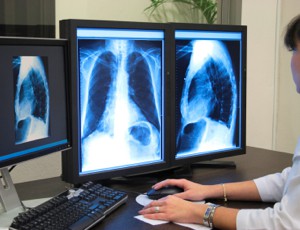
In this text a case is presented in which after installing a complete and intact port, some malfunction was detected in the chemotherapy procedure after several months which leads us to port Malposition” Khavnin Zadeh et al (2018). Abstract: For doing systemic chemotherapy, central venous ports are used to access central veins and internal jugular […]
Septic pulmonary embolism related to implanted central venous access port

Due to the increasing use of intravascular devices and catheters, more catheter-related and device-related SPEs have been reported. Here, we report a case, in which, a CVAPD was infected with Staphylococcus epidermidis, causing recurrent SPE” Hong and Kim (2018). Extract: “The use of central venous access port devices (CVAPDs) has increased rapidly worldwide because of […]
Type of flush solution for implantable port?

In this context, it was intended to determine the effectiveness of a heparin solution compared to sodium chloride 0.9% in the permeability of implanted ports in adults with oncology disease” Ramada et al (2018). Abstract: Totally implantable catheter (CVCTI) is a type of central venous catheter that becomes an essential resource because it increases the […]
Risk factors for complications in cancer patients with totally implantable access ports

To analyze the risk factors for complications associated with the use of totally implantable access ports (TIAPs) in cancer patients” Bademler et al (2018). Abstract: OBJECTIVES: To analyze the risk factors for complications associated with the use of totally implantable access ports (TIAPs) in cancer patients. METHODS: Data for 2,713 cancer patients who received a […]
Iatrogenic paradoxical stroke in a patient with catheter-associated thrombosis

Paradoxical embolism occurs when thrombotic material traverses a right-to-left shunt. We describe the first case of paradoxical stroke resulting from manipulation of a disused chemotherapy port” Policastro and Koci (2018). Abstract: Paradoxical embolism occurs when thrombotic material traverses a right-to-left shunt. We describe the first case of paradoxical stroke resulting from manipulation of a disused […]
Is fluoroscopy necessary for central venous port placement?

The aim of this study is to determine whether intraoperative fluoroscopy (IF) is required to confirm the correct position of the catheter tip in children” Dore et al (2018). Abstract: INTRODUCTION: Central venous port (CVP) placement is traditionally performed under fluoroscopy guidance. However, efforts for radiation dose reduction in children have allowed the introduction of […]
Microcatheter access port for intra-arterial therapy of liver cancer

To develop an implantable port in which a microcatheter can be inserted for a combination therapy of repeated transarterial chemoembolization (TACE) and hepatic arterial infusion chemotherapy (HAIC) for advanced liver cancer” Fukuoka et al (2018). Abstract: PURPOSE: To develop an implantable port in which a microcatheter can be inserted for a combination therapy of repeated […]
Peripheral portacath provides safe and convenient vascular access

This study shows that the use of peripheral PaC is safe. The feedback from patients and nursing staff supports the use of the peripheral PaC. We are exploring additional patient groups that might benefit from this device” Herd et al (2018). Abstract: INTRODUCTION: Adolescent patients with chronic conditions rely on permanent venous access for safe […]
Device to improve non-coring needle insertion into implanted intravenous ports

Implanted intravenous ports (IPs) are increasingly used in health care. The experience of having IPs accessed can vary a great deal for patients. Successful IP access depends on the experience and skill of the health professional and wrongly positioned attempts are not only painful for the patient but can also cause damage to the outer […]
Dual-Port versus mono-port implantation for intra-arterial chemoinfusion therapy

To compare the feasibility and safety of mono-port catheter system and dual-port catheter system for advanced hepatocellular carcinoma (HCC) in patients with anatomic hepatic artery variation and portal vein tumor thrombosis” Kim et al (2018). Abstract: PURPOSE: To compare the feasibility and safety of mono-port catheter system and dual-port catheter system for advanced hepatocellular carcinoma […]
Analysis of peripheral central venous access ports at the forearm

The aim of this study was to analyse the characteristics of central venous catheters with brachial-implanted reservoirs and the complications associated with their use over a 4-years period” Alfonso Alvarez-Rodríguez et al (2018). Abstract: The aim of this study was to analyse the characteristics of central venous catheters with brachial-implanted reservoirs and the complications associated […]
Technique for removing a fibrin sheath from implantable port

We describe a novel technique for removing a fibrin sheath by exteriorizing the catheter through the neck entry site, stripping the fibrin sheath from the catheter manually under sterile conditions and replacing the catheter via a peel-away sheath introduced through the same skin incision as an alternative to complete port replacement or attempted catheter stripping” […]
Implantable port misplacement as a cause of catheter malfunction

However, port CVC misplacement may lead to catheter malfunction (such as partial or total catheter blockade), which might be complicated by thrombosis and catheter superinfections, and these in turn may lead to pulmonary embolism and bloodstream infections” Mauri et al (2018). Abstract: The use of port central venous catheters (CVCs) for chemotherapeutical use has seen […]

